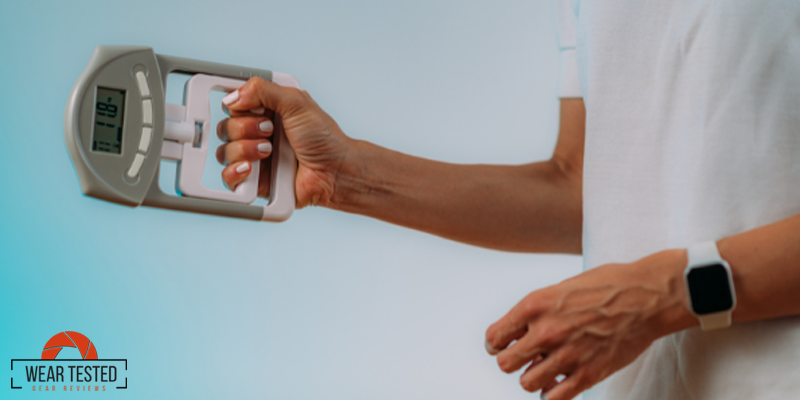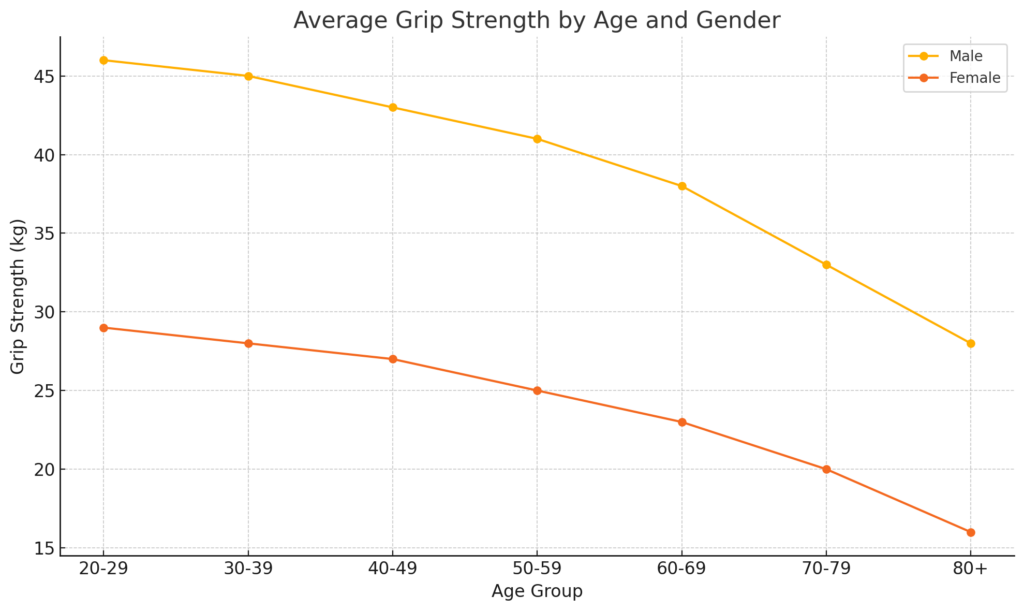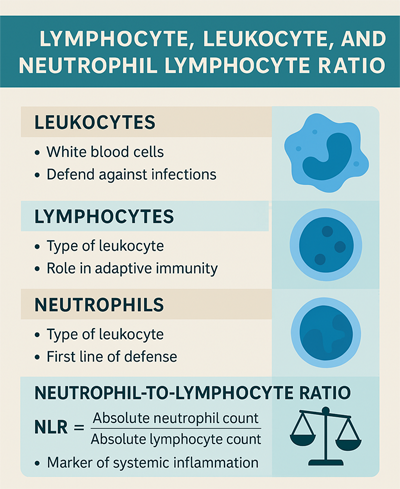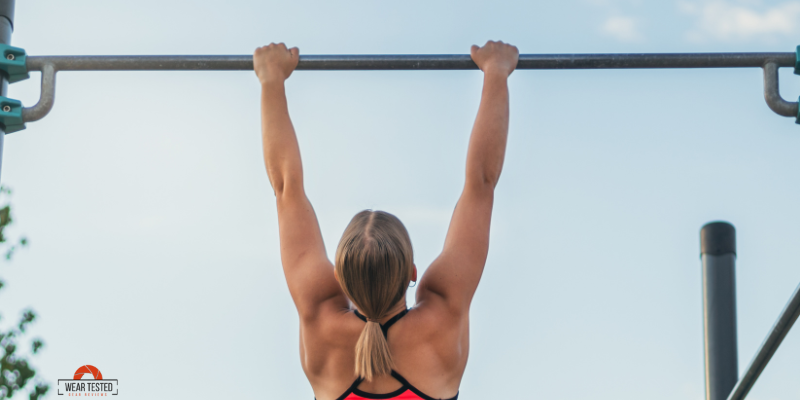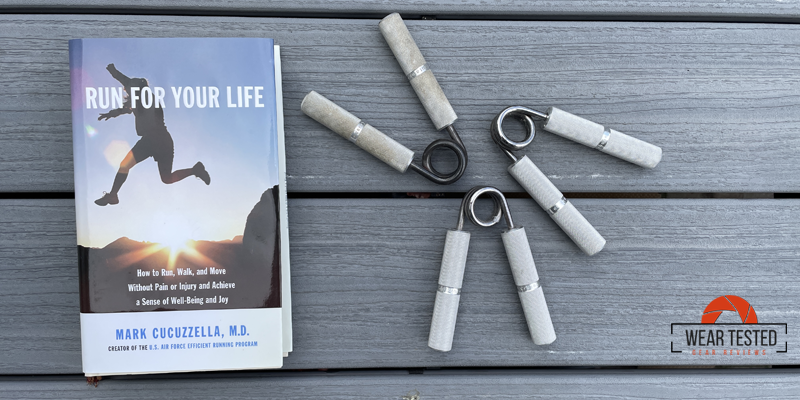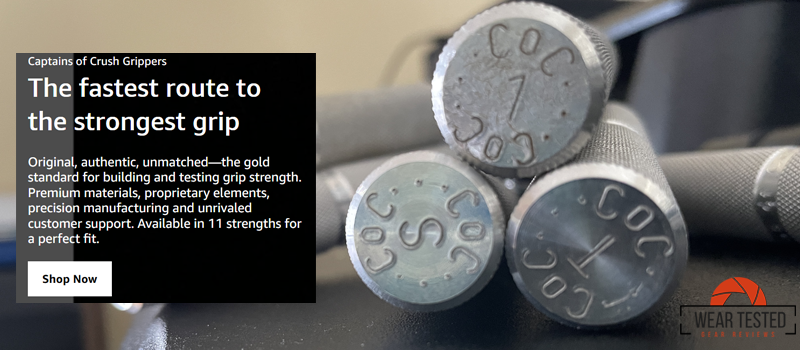The content in this article should not be taken as medical advice. Please consult with your healthcare provider regarding your individual health needs.
Fitness, Healthy Aging & Longevity Series
- Bone Density & Blood Pressure (Improving with Movement)
- Grip Strength (Turn Back the Clock on Aging)
- Centenarian Decathlon (Living Strong and Healthy at 100)
- Healthspan & Biological Age (Maximize Health, Minimize Disease)
- Healthy Aging (Unlock Muscle Health with Strength Training)g)
- Sleep Deprivation (The Shorter Your Sleep, The Shorter Your Life Span)
- Mitochondria (The Secret to Physical Stamina)
Double Your Grip Strength, Cut Your Biological Age in Half!
Grip Strength has emerged as a robust biomarker of biological health, supported by extensive research linking it to physical, metabolic, and cognitive outcomes. Recent studies highlight its role in predicting mortality, chronic disease risk, and aging-related decline, with evidence spanning immune function, musculoskeletal integrity, and mental health.
What is Grip Strength?
Grip strength refers to the amount of force your hand can generate when gripping or holding something. It is a measure of muscular strength (using a hand dynamometer) in your hand, wrist, and forearm.
One squeezes the device as hard as possible, and the force (usually in pounds or kilograms) registered.
- Norms vary by age and gender.
- A grip strength test is non-invasive, easy, and quick making it a common screening tool in healthcare and fitness settings.
In Aging, extensive research has shown that lower grip strength shows:
- Increased risk of frailty
- Higher chances of falls
- Decline in cognitive function
- Greater hospitalization and mortality risk
Grip strength declines with age, and males tend to have higher grip strength than females across all age groups.
Grip Strength as a Health Indicator
Predictive Value for Mortality & Chronic Disease
Low grip strength correlates with increased all-cause mortality and disease-specific risks, including cardiovascular disease, diabetes, and cancer. A 2024 study emphasized its predictive power for hospitalization, frailty, and malnutrition. For example, individuals with weaker grips face higher risks of heart attacks and strokes, surpassing traditional predictors like blood pressure in some cases.
Immune & Inflammatory Biomarkers
A 2025 study linked grip strength to aging-related laboratory parameters, showing inverse correlations with leukocyte counts (r=−0.237r=−0.237 to −0.239−0.239) and neutrophil lymphocyte ratios (r=−0.494r=−0.494), while lymphocyte counts positively correlated (r=0.268r=0.268–0.2860.286). These findings suggest grip strength reflects systemic inflammation and immune resilience.
| Term | What It Is | Function |
| Leukocyte | White blood cell | Fights infection |
| Lymphocyte | Type of leukocyte | Targets viruses, produces antibodies |
| Neutrophil | Type of leukocyte | First defense against bacteria |
| NLR | Neutrophil to Lymphocyte Ratio | Marker of inflammation & immune stress |
Bone Health & Functional Capacity
Identified in 2024, grip strength thresholds for maintaining quality of life in older adults were:
- 77 pounds (~35 kg) for men and 51 pounds (~23 kg) for women for physical health.
- Lower thresholds for older age group, for example, 50 pounds (~23 kg) for those over 80 years old.
- Weak grip strength defined as:
- Less than 57 pounds (~26 kg) for men
- Less than 35 pounds (~16 kg) for women
Falling below these thresholds predicts rapid declines in mobility and increased fracture risk.
Mental Health & Cognitive Function
Weak grip strength is associated with depression, cognitive impairment, and social isolation due to reduced physical activity. A dose-effect relationship exists between grip strength and physical health-related quality of life (p<0.01p<0.01), though not mental health.
Sarcopenia & Aging
Handgrip dynamometry is now central to diagnosing sarcopenia (progressive loss of skeletal muscle mass, strength, function), with low strength indicating accelerated muscle loss. A 2025 Indonesian study validated its utility in assessing functional decline in aging populations.
“Exercise for grip strength is the penicillin against premature aging. The more you maintain your grip strength, the slower the cells age.”
Dr. Ardeshir Hashmi, Endowed Chair of Geriatric Innovation, Cleveland Clinic
Supporting Studies In A Nutshell
- Established grip strength thresholds for quality of life in older adults.
- Proposed grip strength is a vital sign due to its holistic health assessment capabilities.
- Linked grip strength to leukocyte/lymphocyte ratios and inflammation.
- Highlighted connections to immune resilience and chronic disease risks.
These studies collectively advocate for integrating grip strength into routine health assessments as a cost-effective, non-invasive biomarker. While thresholds vary by demographics, its predictive and diagnostic utility across diverse health domains is now well-established.
When you add it all up, your grip strength is essentially an indication of your overall health and longevity. In a way, your grip strength can almost predict your future health.
Exercises to Improve or Maintain Grip Strength
- Hand Grippers
- Use adjustable hand grippers to do squeezes daily (3 sets of 10–15 reps).
- Great for building crush strength.
- Farmer’s Carries
- Hold a pair of heavy dumbbells or kettlebells at your sides and walk for 30–60 seconds.
- Builds grip, core, and postural strength.
- Dead Hangs
- Hang from a pull-up bar for 20–60 seconds.
- Builds endurance and shoulder stability.
- Towel or Rope Wrapping
- Wrap a towel around dumbbells or pull-up bars to increase grip demand.
- Improves both crush and support grip.
- Therapy Putty or Grip Balls
- Squeeze the therapy putty or a stress ball multiple times a day.
- Useful for improving dexterity and finger strength.
- Wrist Curls & Reverse Wrist Curls
- Strengthen forearm muscles with light dumbbells or resistance bands.
- Rice Bucket Training
- Dig, twist, or grab in a bucket of dry rice.
- Excellent for fine motor strength.
I’ve been using the Captain of Crush grippers since 2010. From 80 pounds (Sport) to 100 pounds (Trainer) to 140 pounds (No. 1), my set of 3 grippers keeps me at bay.
For the best results, incorporate these exercises into your daily routine, starting with lighter resistance and gradually increasing as your strength improves. Always perform exercises on both hands and consult with a healthcare professional before starting a new exercise regimen, especially if you have any pre-existing conditions.
Remember, consistency is key. Even 10 minutes of daily exercise can make a significant difference in maintaining and improving grip strength as you age.
References
Clinical Interventions in Aging
Journal of Health, Population, and Nutrition
Hand grip strength as a proposed new vital sign of health: a narrative review of evidences
Joan Pagano Fitness
Cleveland Clinic
What Your Grip Strength Means for Your Overall Health — and Exercises To Improve It
Frontiers in Medicine
Ohio State University
Why a strong grip is important, and how to strengthen those muscles
Science Daily
Wiley Online Library
Factors associated with handgrip strength across the life course: A systematic review
Frontiers in Medicine
MDPI
Handgrip Strength as an Indicator of Overall Strength and Functional Performance—Systematic Review
Stanford Lifestyle Medicine
The Importance of Grip Strength: Exploring its Link to Longevity
Harvard Health
Journal of Orthopaedic & Sports Physical Therapy



